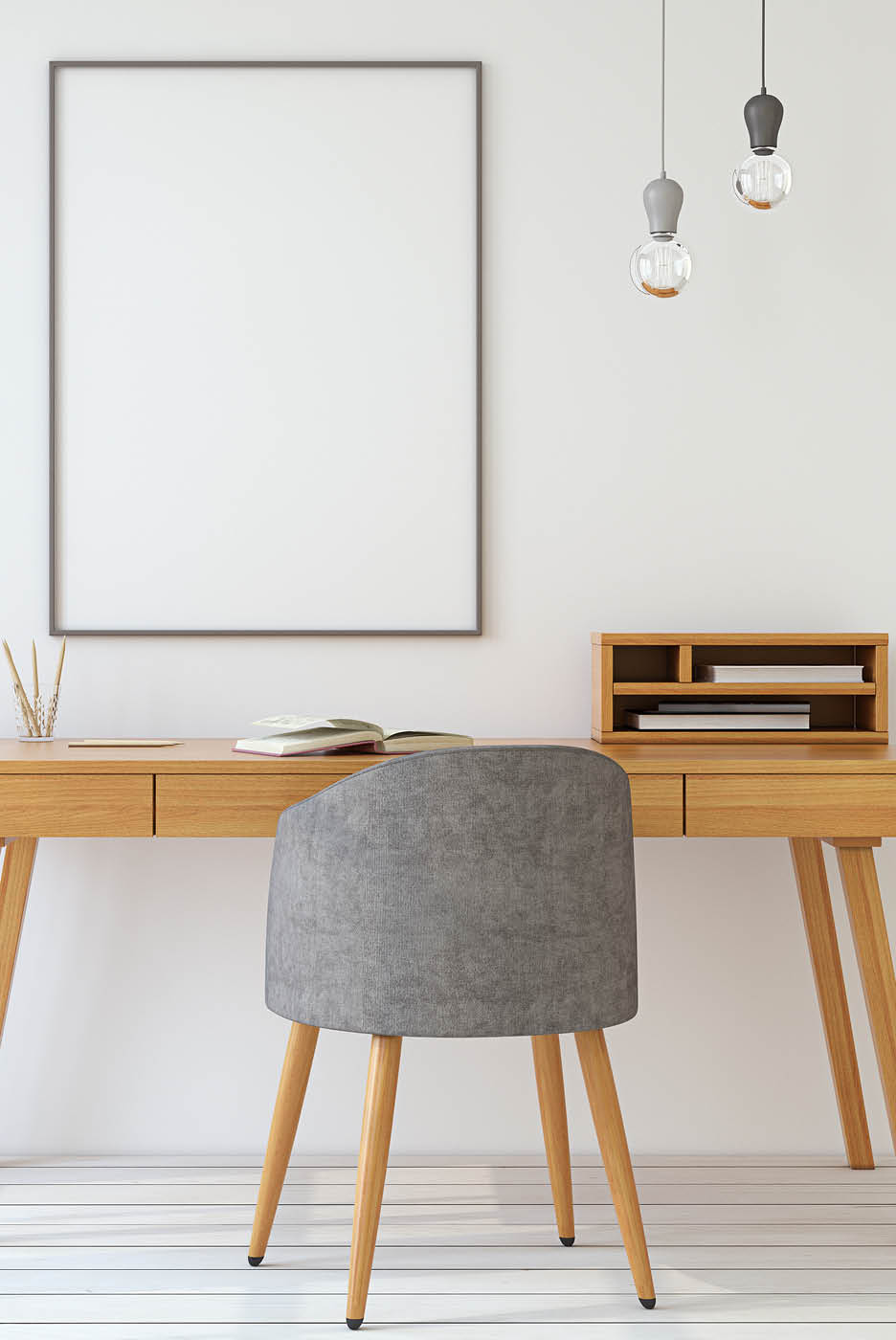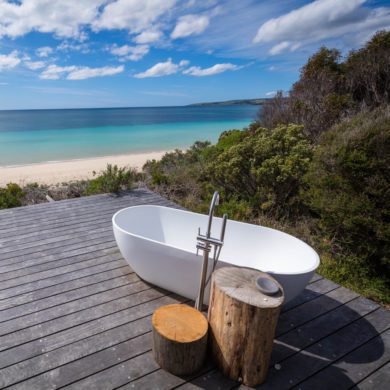Ever since Covid-19 turned us all into homebodies, high-profile Sydney architect Hannah Tribe has noticed that some of her clients have become a lot more obsessed with washing – and specifically, the room they like to do it in.
“We’re doing lots of beautiful finishes in timber and stone, with lots of storage,” she confides. But this isn’t the humble bathroom that has captured clients’ attention, it’s the laundry room – ‘flash laundries’ as Tribe describes these temples to sartorial cleanliness – and they’ve become much more than just a place to put your appliances.
“Now they’re spending more time at home, people don’t want to look at piles of washing everywhere,” she adds. “If you have to do laundry, you may as well do it somewhere nice.”
In fact, the demand for high-end laundry rooms is just one of several home trends to emerge as we adjust to post-pandemic life. With 32 per cent of all employed Australians working from home at the height of lockdown (and nearly 50 per cent of Australians expecting WFH to continue over the next six months), our houses and apartments have become important to us in ways we could never have imagined.
People don’t want to look at piles of washing everywhere
Even if you’re not part of the exodus from our cities, chances are you’re looking hard at how to make your space more suited to the new normal. That means everything from flash laundries to ‘zoom rooms’, photo walls, and an upgraded home office.
“During the pandemic, our experience of ‘home’ was radically redefined as a space where boundaries collapsed as we worked, lived, played and learnt there,” says architecture and design expert Fleur Watson, the new Executive Director and Chief Curator for the Centre for Architecture Victoria and Open House Melbourne. “Our domestic spaces provided a place of refuge and retreat.”
The problem for many of us, though, was that we were sharing our spaces full-time with either housemates, partners or children (or any combination of the three). Suddenly, there was no way to hide from each other or each other’s mess — which meant stylishly open-plan living/kitchen/dining areas with polished stone floors became a chaotic, acoustic nightmare.
Open-plan living was already starting to decline in popularity pre-Covid, says Tribe; the pandemic has only hastened its demise.
“The proliferation of hard surfaces means spaces have this dragging, reverberant quality,” she explains, adding that she’s become much more aware of acoustics at her home since lockdown and its associated shouting. “People are finding that they’re more interested in having traditional rooms, scaled rooms, rather than big museum spaces. I think acoustically that’s become really important.”
Or as Watson puts it: “We have discovered the beautiful functionality of walls.”
Of course, not everyone can have discrete rooms for different activities. In some homes, like that of Tim McKibbin, CEO of the Real Estate Institute of NSW, you have to work within the confines of your existing space. “In my house, we’ve converted our loungeroom into an office and studio, with screens I can pull across for media interviews,” he admits. “My wife is working from home, so we’ve turned a room into an office for her, too.”
Home offices were once a common feature of the 1970s and 80s middle-class home – the perfect place for a large desktop computer, fax machine and Filofax. But they fell out of favour “when we didn’t need a designated room because the laptop can migrate all over the house,” says Tribe. “I think we’re going to see – at least temporarily – people asking for proper work-from-home spaces.”
Interior designer Simone Haag reports an increase in clients asking for shelving that can form a backdrop to their zoom meetings. “They want shelves that function like a video wall, so they can change the artwork or change the look of them seasonally,” she says. “One of my clients, who works in the whiskey industry, asked for shelves to display all the paraphernalia like expensive glasses and whiskey bottles. His wife was happy as it meant it all moved from the living room to the study.”
Thanks to their increased time at home, Haag says men in heterosexual couples are paying more attention to interior design decisions that might previously have been made solely by their partners. As cliched as it might seem, they often worry about the size of the television (generally large) and comfortable dining chairs – “they envisage long dinners sitting at the table,” she says.
Outside space has also become increasingly essential for many families – one of the reasons that many have decided to leave the city for the country. Sheree Rubinstein, founder of women’s online network One Roof, moved to a town near Byron Bay from her inner-city Melbourne home last August last year, and feels the experience has altered her home hierarchy of needs. “I was always a city girl, but I love the outdoor lifestyle here,” she says. “If we move back to Melbourne, we won’t be able to afford a place with a backyard in the suburb where we were living previously, and I think I’ll struggle with the choice between location and outdoor space. We’ll definitely need to be near a park.”
Watson believes that our collective pandemic experience means we’ve become “deeply connected to our local park, bike path and high street”, as well as our local community. Even small design decisions can make a huge difference to our happiness, she says.
“Redesigning a room for flexible working, re-envisaging a workshop or garage into a playroom, adapting a nature strip as a shared community garden – all these small design moves positively and significantly change our experience of home and community.”












No Comments